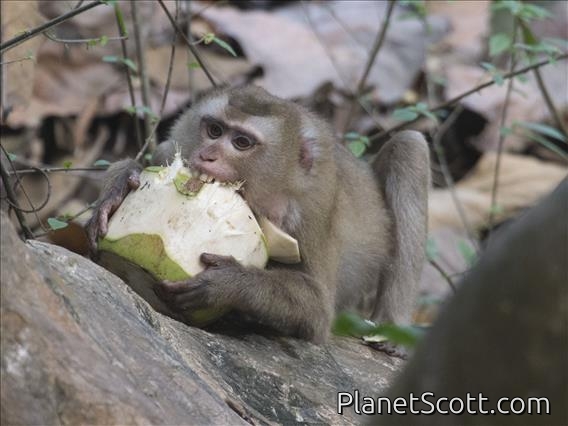Northern Pig-tailed Macaque (Macaca leonina)


About Northern Pig-tailed Macaque (Macaca leonina)
- Kingdom: Animals
- Phylum: Chordates
- Class: Mammals
- Order: Primates
- Family: Old World Monkeys
The northern pig-tailed macaque is a vulnerable species of macaque in the subfamily Cercopithecidae. It is found in Bangladesh, Cambodia, China, India, Laos, Myanmar, Thailand, and Vietnam. Traditionally, M. leonina was considered a subspecies of the southern pig-tailed macaque, but is now classified as an individual species. In the 21st century, the pig-tailed macaque was split into the northern pig-tailed macaque species Macaca leonina and the Sundaland pig-tailed macaque species M. nemestrina. This reclassification was aided by the observation of sexual swellings and basic attributes that distinguish the two. The northern pig-tailed macaque is frugivorous and their social grouping is matriarchal, where sexual dimorphic traits can distinguish males and females. Their adaptation to omnivorous diets occur in periods of fruit scarcity, munching on wild vegetation and crops, human foods, and small insects and mammals. Despite their adaptability, northern-pig tailed macaques experience viral threats such as the human immunodeficiency virus type 1, pathogenic simian immunodeficiency, and coronavirus. Human impacts are also present, such as agricultural expansions, aquaculture, transportation infrastructure, hunting and logging for meat and trophies, and the illegal pet trade; that result in habitat loss, forest fragmentation, and a reduced well-being.
Source: Wikipedia
Visits
-
1998-12-10
Khao Yai National Park, ThailandMany hanging out on the main road. My guess is that they are fed by people in cars although I did not observe this. -
2013-02-10
Khao Yai National Park, Thailand




